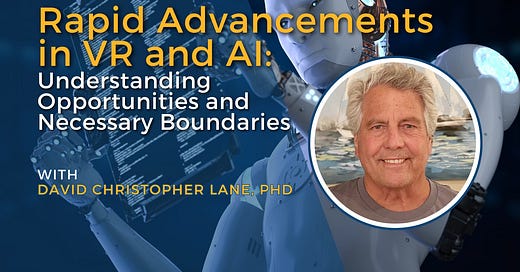Rapid Advancements in VR and AI: Understanding Opportunities and Necessary Boundaries
With David Christopher Lane, PhD
Previously, on our podcast, I interviewed Lane on his work with cults and gurus. In Part II, David Christopher Lane, PhD and I discussed his experiences with the worlds of Virtual Reality (VR), Artificial Intelligence (AI), and neuroscience. In addition to his engaging and in-depth experiences in consciousness studies, cult-mind communities, and concern…
Keep reading with a 7-day free trial
Subscribe to Dr. Steven Hassan to keep reading this post and get 7 days of free access to the full post archives.





